How To - Build an 18650 Li-Ion Pack
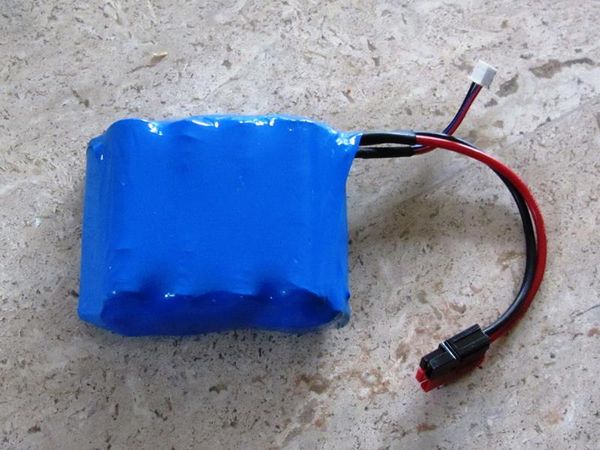
| |
| Round Cell Pack |
Introduction
In an effort to find batteries with higher energy density in terms of watt-hours per gram as compared to our standard lipoly packs, I took a look at some new cells from Panasonic which look like they might be just the ticket. This page then is about some testing and a build I have done on this new cell, the NCR18650PF.
The Cells
The cell, which is a round hard case type, was developed by Panasonic for new Automotive applications such as Tesla. Dimensionally it measures 18mm Diameter x 65mm long hence the 18650 number. This particular cell has the following specifications:
- Capacity - 2900mAh
- Usable Capacity - 2500mAh
- Full charge voltage - 4.2v
- Minimum voltage (under load) - 2.5v (single cell), 2.75v (series cells)
- Max continuous discharge - 10A
- Max pulse (burst) current - 18A
- Single cell weight - 46g
Where to buy
- You can find them on ebay or "Google" them for other countries. I buy mine here in the states from Mountain Electronics.
- Here is a link:
Power Density
I'm using the following simple power density formula for comparison to two standard LiPoly packs:
(mAh x volts)/grams wgt = mWh/g
Comparison:
- Nanotech 3300mAh, 3S/35C pack - (3300 x 11.1)/270 = 136mWh/g
- Multistar 5200mAh, 3S/10C pack - (5200 x 11.1)/331 = 174mWh/g
- 18650 2900mAh, 3S/3.5C pack - (2900 x 11.1)/148 = 218mWh/g
- (Pack weight includes all wire, connectors and covering film)
Clearly the round cell pack should be much better in any power or energy capacity measures.
The following picture gives an idea of the size of these cells relative to a Nanotech 3300 and 3 AA cells.
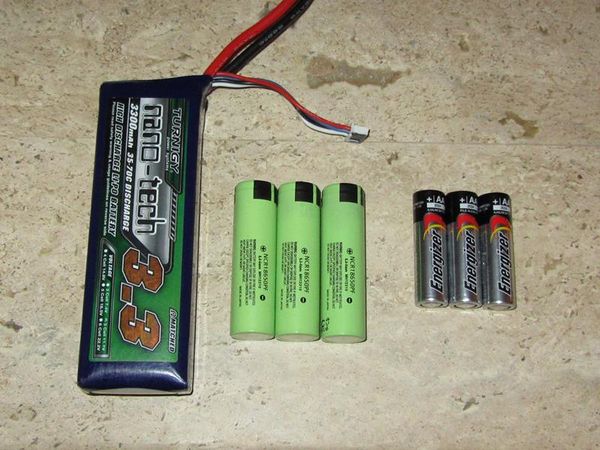
|
| Size comparison |
Initial Test Pack
My first tests were done by building a single 3S pack then running 3 tests against 3 differnt test parameter sets:
- 1. Constant 3.3A to 2.75v per cell
- 2. Constant 10A to 9.6v
- 3. Constant 18A for 10 seconds.
The charts below show the result averages for the 3.3A and 10A tests.
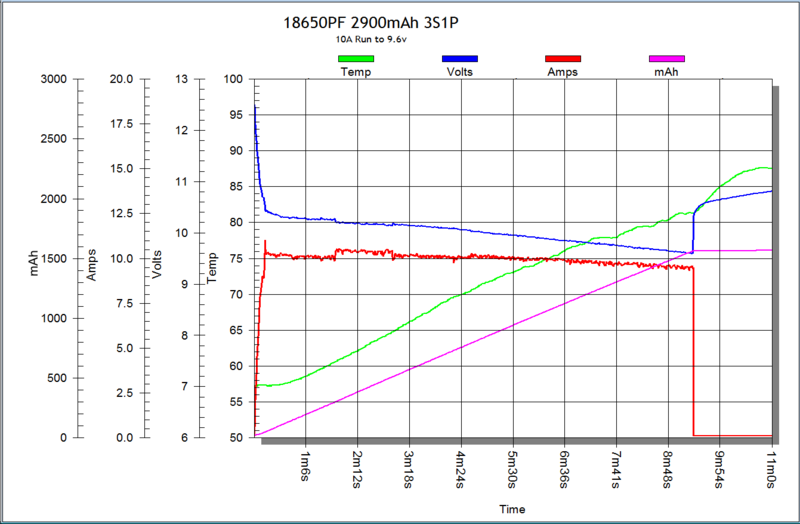
|
| Initial 3S test at 10A |
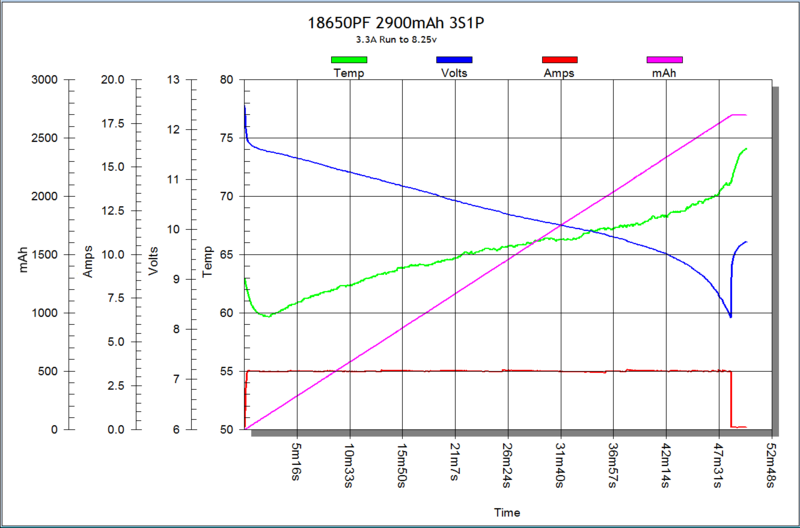
|
| Initial 3S test at 3.3A |
3S3P Build and Test
Next was to build the 3S3P pack, test it and (obviously) fly it to validate its viability.
3S3P Specification:
- Capacity - 8700mAh
- Usable Capacity - 7480mAh
- Full charge voltage - 12.6v
- Minimum voltage (under load) - 8.25v
- Max continuous discharge - 30A
- Max pulse (burst) current - 54A
- Target pack weight - 465g
- Actual Weight = 462.5g
- Finished power density - 208mWh/g
Build it!
First, I got all the cells "stuck" together using 3M Extreme double sided tape. This keeps the cells firmly together which makes sodering much easier. I stacked the cells in parallel units.

|
| Assembling with 3M Extreme tape |
Next up, weigh the bare cells. Target pack weight with all wires, connectors insulators and shrink film - 465g

|
| The weigh-in |
Begin forming 14ga copper wire buss bars insuring clearance over any battery edge.
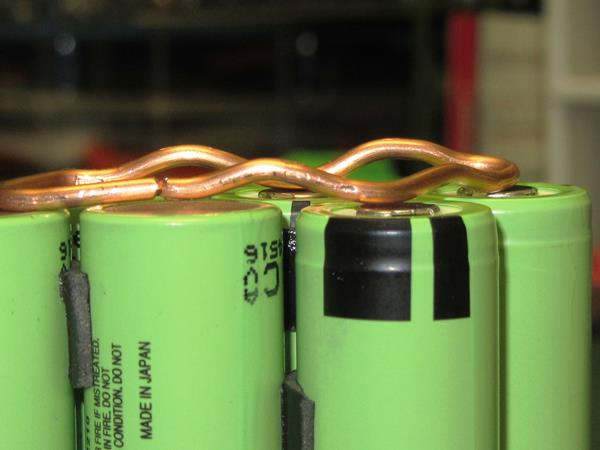
|
| Buss forming detail |
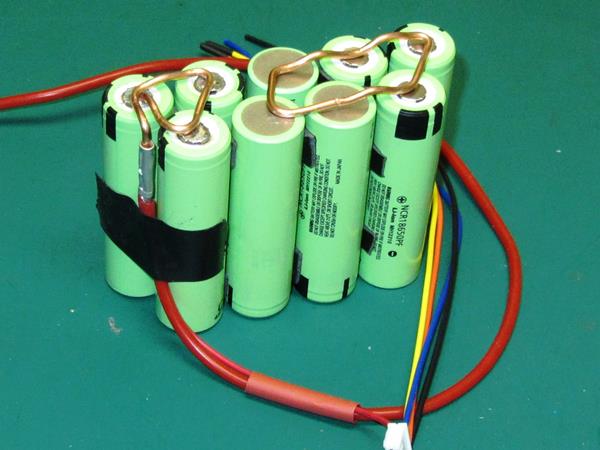
|
| Buss/wiring layout |
Solder the buss bars using 37/63 solder and a blunt nose 40w iron. Use extra rosin and solder as quickly as possible. Fill the gaps under the buss bars with low temp hot glue to act as an insulator.
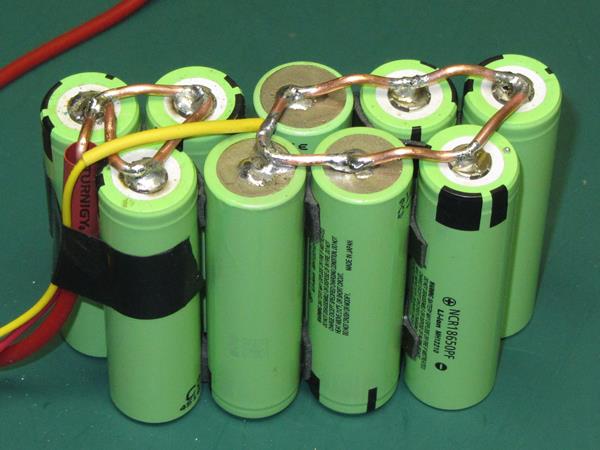
|
| Soldered up |
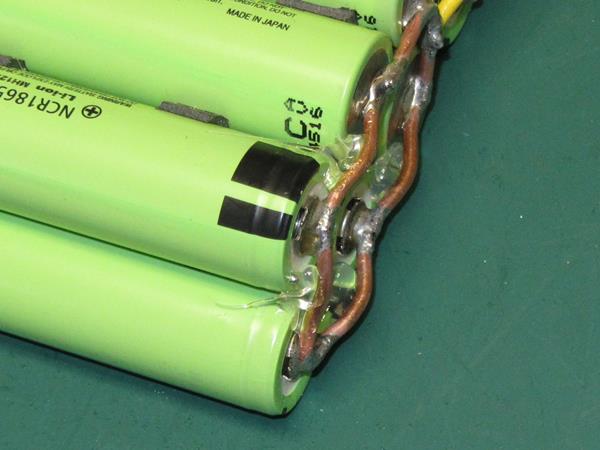
|
| Hot-glue insulator |
Last build piece, insulate the ends and cover with 125mm heat shrink tubing.
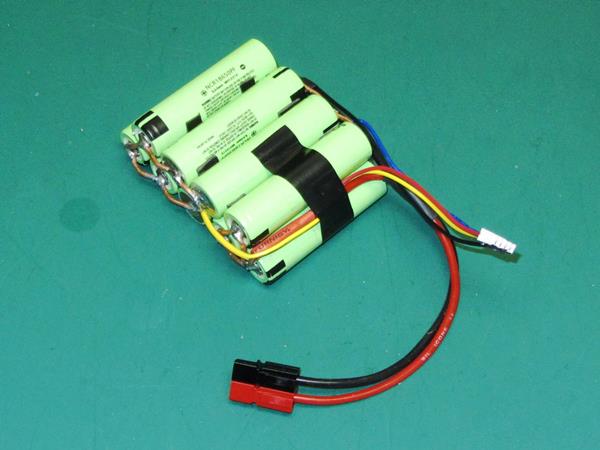
|
| Ready to wrap |
Final size and Pack weights
Quite a bit smaller (physically) than near equivalent Nanotechs. Cells shown are a 3300 and two 2650 packs.
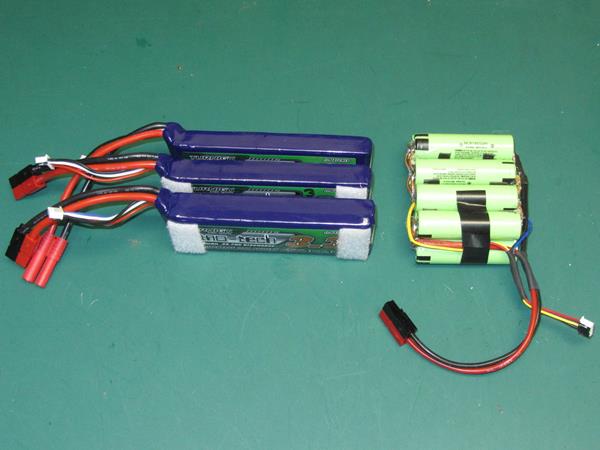
|
| Size: 8800mAh Nanos vs. 8700mAh round cells |
Should be able to make the target weight of 465g easily.
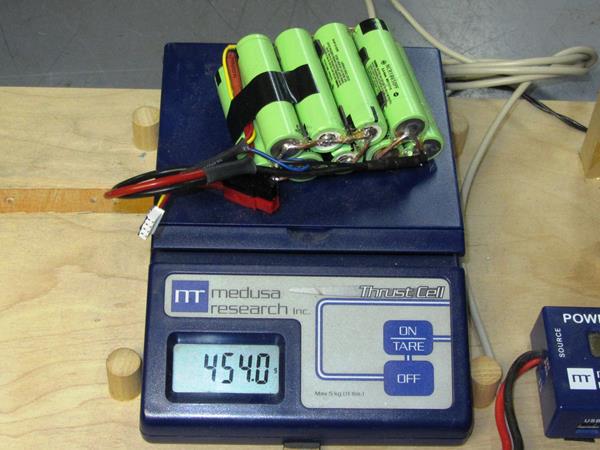
|
| Weigh in without shrink |

|
| A little foam to cover the terminals and two layers of shrink and it's wrapped and ready! |
Other Pack Configurations
Here are some more 18650PF packs I have put together:

|
| A 4S4P (11,600mAh) configuration to fit my Phantom FX-61
811g complete with wires, insulation and shrink (not shown) |
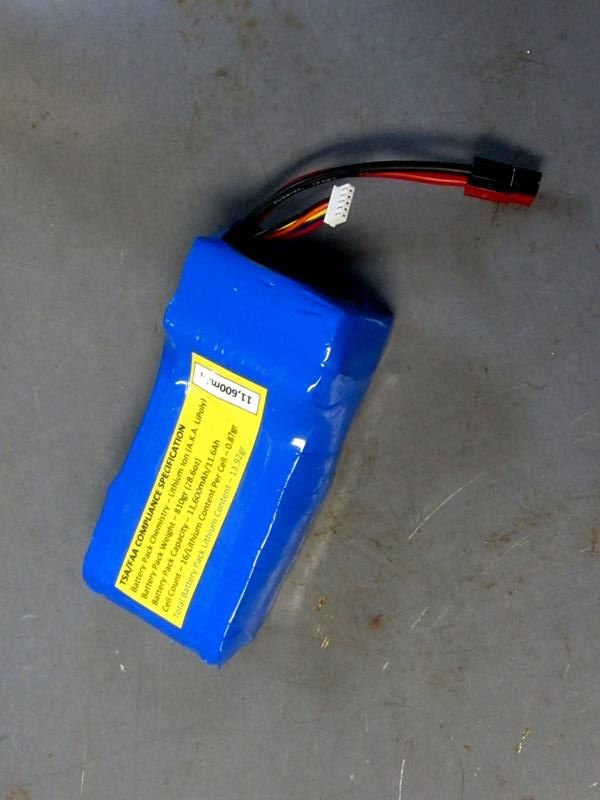
|
| Complete! |
Testing Results
The following charts show some bench test results that easily support the original 3S tests.
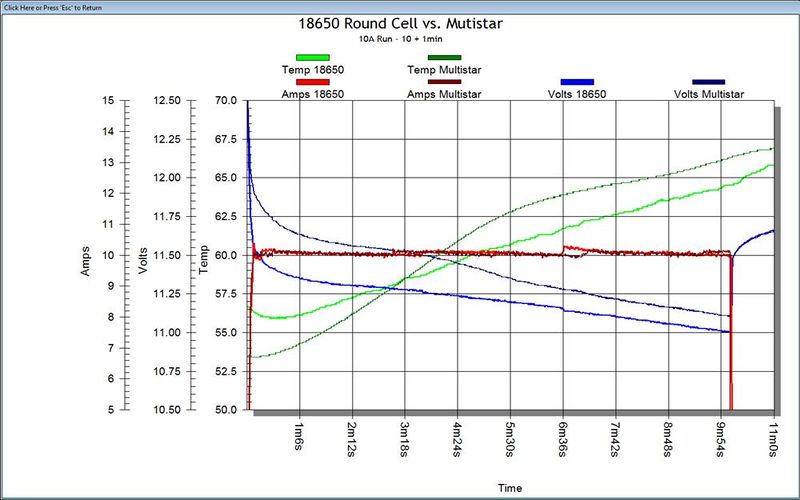
|
| 10 minute run at 10A (3.3A/cell) |
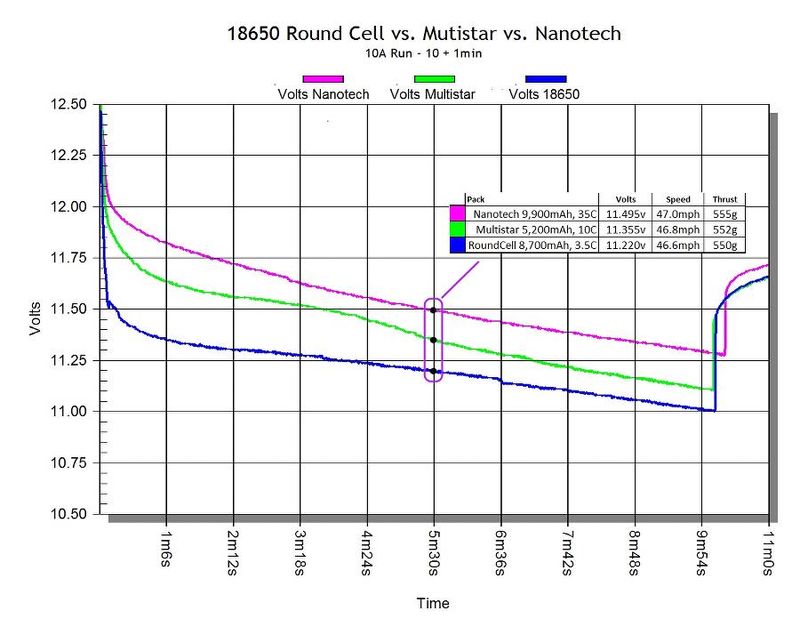
|
| Voltage drop comparison |
Flight Test!
So I finally got a chance to test the pack on my Phantom FX-61 and the results were excellent. I flew 30 minutes and consumed 5804mAh based on what I put back in to recharge the pack. Given the usable capacity is 7480mAh I still had quite a bit to go. The launch was a non issue so it is making plenty of initial power and the full speed runs were as expected pulling ~33 to ~38 amps.
Below are a couple of pictures from my FPV telemetry showing some in flight data. The first is while crusing along and the second is a full spped bit after 22 minutes of flight. (Ignore the % as I had the parameter set wrong in the OSD).
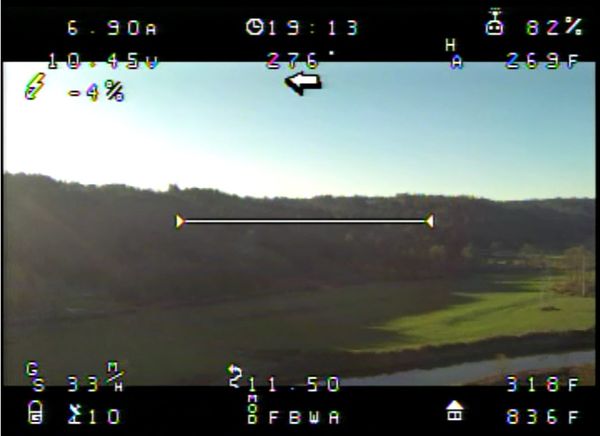
|
| Cruising |
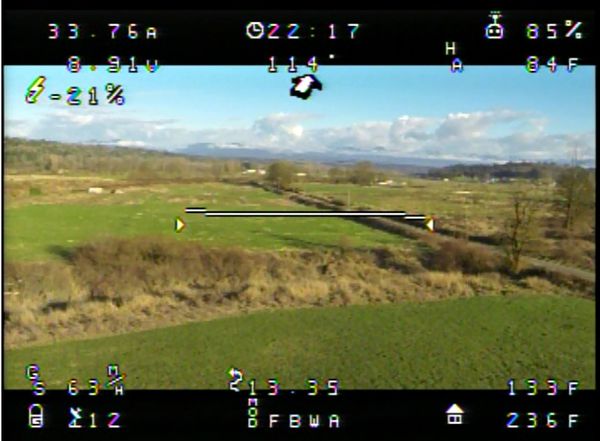
|
| Full Throttle after 22 minutes |
See Also
Vendors used for this project
- Mountain Electronics